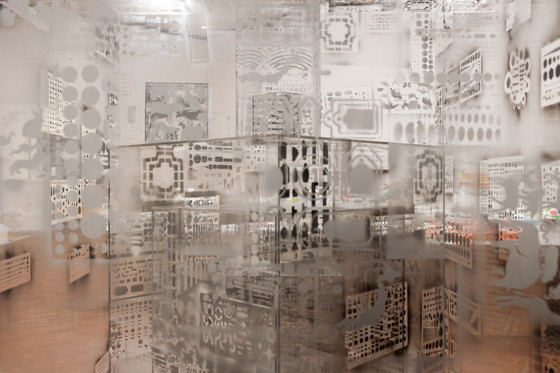For a major city museum like the Yokohama Museum of Art to hand over its big temporary exhibitions’ space to a 30 year old artist, something must be going on. From March to May 2009 Teppei Kaneuji dominated the Tokyo/Yokohama art scene. He didn’t come out of nowhere but his rise and rise rivalled that of Matthew Barney in New York the early 1990s. Kaneuji had his first Tokyo show in 2004 and has subsequently shown in New York, Beijing, was included in the 2008 Museum of Contemporary Art, Tokyo MOT annual: unravelling and revealing, and completed a residency at Tokyo Wonder Site, Shibuya the same year.
Before taking Tokyo by storm, Kaneuji was born and educated in the Osaka/Kyoto area. Apart from a year at the Royal College of Art in London Kaneuji was finding his way at the Kyoto City University of Arts (1997-2003). One of his teachers there was Kohdai Nakahara whose work was seen in Zones of love: contemporary art from Japan (1991-2) amongst other international shows of contemporary Japanese art. Nakahara’s work used what were considered to be unconventional materials such as wool, Lego, motorised toys. The idea of connection between unlikely materials and people was very apparent in Nakahara’s work; there was, amongst other things, an enormous knitting piece (Viridian adapter 1989) which involved the collaboration of a person who would connect with a part of it, and a motorised polystyrene dog which could be led by the audience. The idea of the art object as an extension of the body or something to interact equally with (Nakahara also, at this time, custom made a trampoline…), and that a continuum exists between the people and made objects in the world backgrounds Kaneuji’s work. Kaneuji also spent time in the late 1990s in the studio of Kenji Yanobe whose art is characterised by an understanding of the precariousness of human existence in the post nuclear age and the importance of play as a survival mechanism.
Yanobe and Nakahara are the same generation as the super star Takeshi Murakami and all three were part of the 1990s neo-pop art phenomenon in Japan which included Yoshitomo Nara. Socially this generation was known as otaku, supposedly apolitical, withdrawn, and obsessed by manga and anime but in actuality artists such as Murakami and Nara had transgressed the obsession with Japaneseness both within and outside of the country and become, by the end of the 1990s truly international. In Murakami’s case he was and is fiercely critical of Japan’s cultural conformity. Kaneuji is part of the loose group of younger artists who came of age in the late 1990s and are informed by the work of these slightly older ‘neo-pop’ artists.
